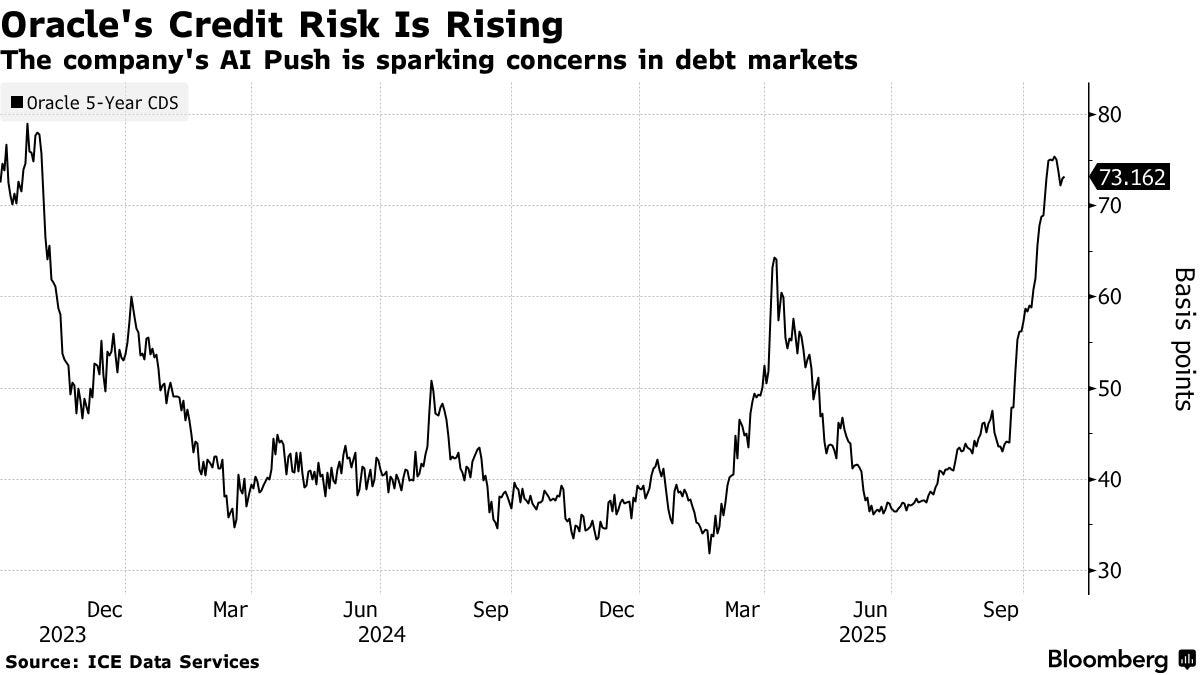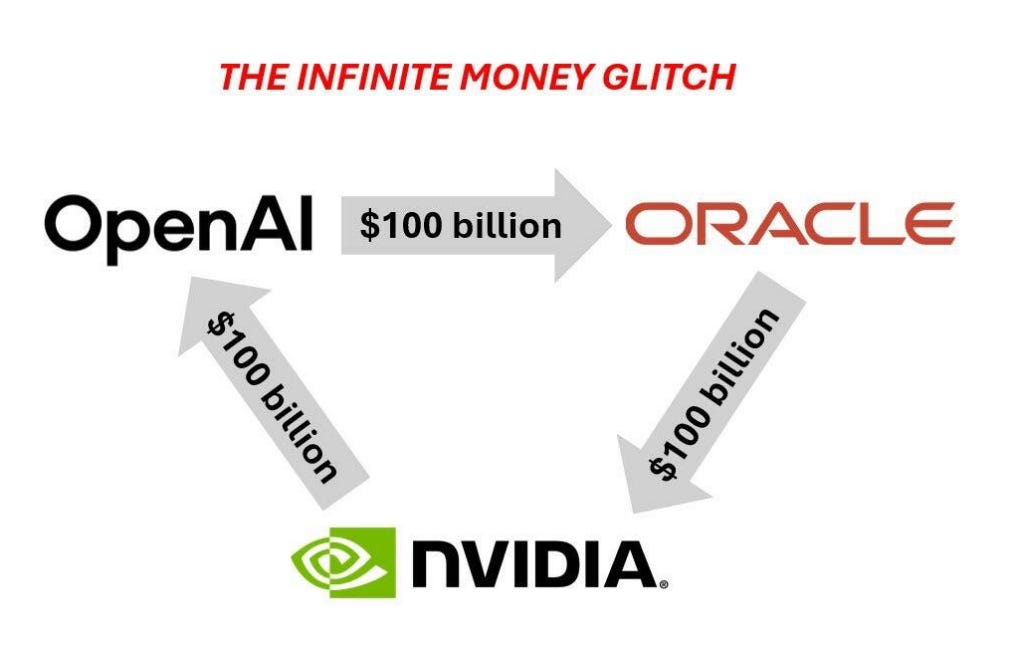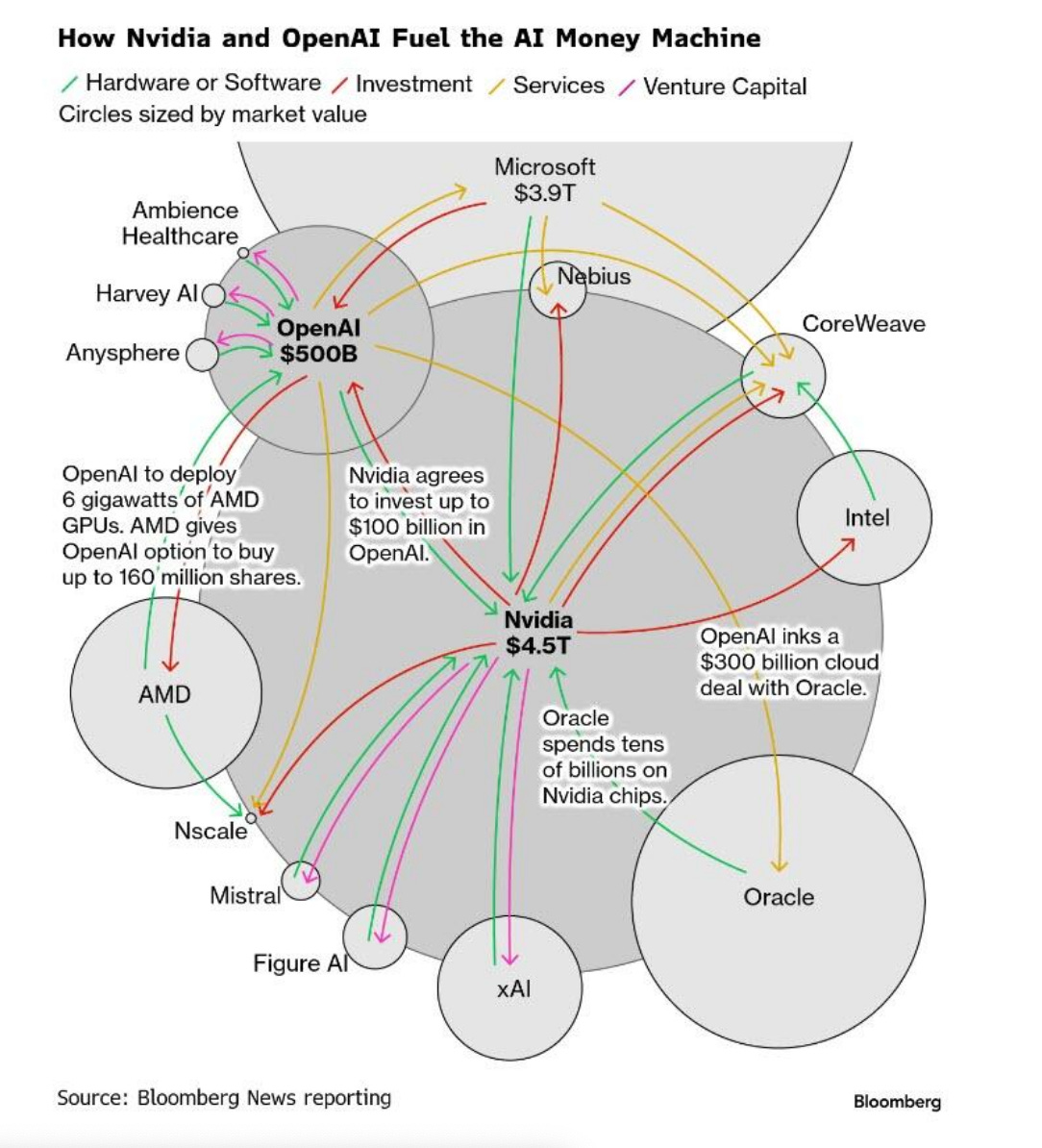Webull beats Q3 expectations as revenue jumps 55% on strong trading
For traders, the real story isn’t the cut — it’s the silence about what comes next. The Chair’s press conference was a masterclass in calculated vagueness, leaving December wide open. His language was careful, even surgical: “not a foregone conclusion,” he said, as if warning the market not to treat this as the beginning of a dovish crusade.
The message was clear — the Fed will follow the data, not the noise. But in a world built on forward guidance, withholding direction is its own form of tightening. Powell’s Balancing Act: The Fed Eases, but Keeps the Market Guessing (see below)
For the first half hour, it felt like one of those dull Fed days — the kind traders half-listen to while recalculating positions on another screen. The decision hit as expected: a rate cut, QT ended, a couple of dissenters murmuring about prudence. Stocks shrugged. Bonds drifted. Gold hovered above $4,000, and bitcoin stayed motionless.
The tape was tranquil, almost narcotic — the kind of calm that precedes the sound of wood cracking underfoot. Then at 2:35 p.m., Jerome Powell leaned into the microphone and, without warning, opened the trapdoor beneath everyone’s feet. “While September and October were risk-management cuts,” he said evenly, “December isn’t for sure. Far from it.”
In those eight words, months of market confidence collapsed. Within seconds, the odds of a December cut plunged from near-certainty — 95% — to a shaky 65%. The 2-year yield spiked almost 10 basis points. The 10-year jumped 5. The dollar ripped higher. Gold was slammed back below $4,000.
Stocks tumbled 100 points in minutes, and for the first time in months, you could sense “sour grapes” in the tape as the rate cut balloons popped. It wasn’t what Powell said — it was what it meant: that the easing cycle everyone thought was locked in may still have a hawkish ghost rattling inside it.
In trading, there’s a rule that doesn’t need to be written — you never rush to fade a central-bank surprise. You can probe around the edges, sure, but don’t bet the farm on calling the turn. The first day belongs to shock, the second to recalibration. This time is no different. The Fed didn’t just tweak policy; it jolted a market that had grown hooked on the comfort of rate cut predictability.
Powell’s trapdoor wasn’t a hike or a U-turn — it was the quiet removal of the market’s dovish safety net. And it’s that loss of certainty, more than any shift in liquidity, that cracked the tape. Traders can handle risk — they live for it — but doubt is the one thing they can’t price
So, for now, the discipline holds: step back, let the dust settle, and watch what the bond and reversion traders are telling you. If the yields fall back, hinting that the market will continue to price in its own version of policy reality, risk assets will follow.
While Equities scream, credit whispers truth. And over in credit, the whispers are starting to sound like cracks. Take Oracle (NYSE:ORCL) (The Canary) — the unexpected proxy for the AI-debt boom. Its five-year credit default swaps are hovering near the highest since 2023, now trading around 83 basis points, up roughly 25 bps on the week.
In simple terms, the cost of insuring against Oracle defaulting has jumped sharply. Why? Because Oracle’s balance sheet is ballooning to feed the AI machine. Its debt-to-equity ratio now sits near 500% — compared to 50% for Amazon (NASDAQ:AMZN), 30% for Microsoft (NASDAQ:MSFT), even less for Meta (NASDAQ:META) and Google (NASDAQ:GOOGL).
Morgan Stanley expects Oracle’s net adjusted debt to triple to roughly $290 billion by 2028. That’s before counting its $38 billion bond deal to finance data centers in Texas and Wisconsin under its Stargate project with OpenAI.
The story writes itself: a company borrowing at scale to build assets that don’t yet cash-flow, for a client that doesn’t yet generate those revenues. It’s the modern version of the old railway boom — only now the tracks are data lines, and the engines run on borrowed power. Credit traders see it clearly. The widening in Oracle CDS is not isolated — it’s the first tremor in a market that’s starting to question whether this entire AI-capex wave is funded by faith more than fundamentals.
This is where Powell’s warning and the AI-leverage story intersect. For the better part of two years, the Fed has been trying to land the plane softly — easing just enough to let the market keep flying, but not enough to fuel another bubble. But bubbles don’t need rate cuts to inflate; they only need belief that money will always be there. Powell just punctured that belief.
By saying December isn’t guaranteed, he reminded everyone that the Fed’s “put” has a ceiling. And in a market where vast new industries — data centers, AI infrastructure, power generation — are being financed on debt expectations, that ceiling matters.
The Bank of England is already flashing amber on this. It warned last week that debt-financed AI and energy projects could become a systemic risk if optimism cools. Their analysis mirrors what traders already know: when financing shifts from profits to promises, the contagion doesn’t start in equities; it starts in credit. And right now, credit is whispering that we’ve reached the promise saturation point.
Forget the statement, the press release, the technical tweaks — Powell’s message was simpler: the Fed isn’t here to underwrite market euphoria. He didn’t close the door on cuts; he just reminded the market that it’s his hand on the doorknob, not theirs. That subtle shift of control is what markets hate most. For months, they’ve been driving the narrative — front-running policy, pricing in the glide path. Powell just took the wheel back.
The irony is that in doing so, he probably reinforced the very volatility he’s trying to manage. Because when the most powerful central bank on earth surprises the market this late in the cycle, you don’t get calm digestion — you get traders staring at each other over flickering screens, trying to decide who moves first.
For now, the 48-hour rule holds (never fade a central bank’s surprise). On the first flush, it’s essential to let the liquidation run its course — a decent reversion to the intraday mean could change the rule. But generally, the following 35 hours will separate reflex from conviction, revealing who’s liquidating /hedging and who’s truly repositioning.
In the meantime, gold may drift back toward the $3,900 line as yesterday’s buying spree reverses, while the dollar’s bounce could easily overshoot as positioning clears (but keep an eye on the dollar; that is typically the first tell). Yields should remain firm into the weekend — the market still needs to find where the new floor really sits.
Equities, especially the high-beta AI names, will try to claw back, but watch the CDS market — it’s the truer signal. If Oracle’s spreads widen further, others will follow. Because when credit risk starts to reprice, it’s not just one company — it’s the architecture of the entire boom being re-evaluated. Powell didn’t mean to set off a panic.
But in the way only a central banker can, he reminded the world that even faith-based markets have trapdoors. And when the man with the key says the next cut isn’t certain, traders learn fast that the floor beneath them never was either.
Powell’s Balancing Act: The Fed Eases, but Keeps the Market Guessing
The market got what it expected — and yet somehow, it still feels uneasy. The Fed shaved another 25 basis points off the policy rate, lowering it to 3.75–4.00%, acknowledging what everyone on the floor already knows: the labour market is softening, and the cracks in the expansion are becoming visible through the glitter of headline indices. But the move wasn’t a victory lap. It was a controlled descent, and Powell made sure nobody mistook it for a glide path.
For traders, the real story isn’t the cut — it’s the silence about what comes next. The Chair’s press conference was a masterclass in calculated vagueness, leaving December wide open. His language was careful, even surgical: “not a foregone conclusion,” he said, as if warning the market not to treat this as the beginning of a dovish crusade. The message was clear — the Fed will follow the data, not the noise. But in a world built on forward guidance, withholding direction is its own form of tightening.
Underneath the headline, the committee’s split tells the tale of a central bank caught between caution and conviction. Governor Miran wanted 50 bps — a bolder cut to front-load easing while labour slack is still manageable. Kansas City’s Schmid, on the other hand, argued for no move at all — a reminder that the hawks are not extinct, merely dormant.
The balance between these two poles defines the Powell era: a perpetual tug-of-war between preemption and patience. The Chair remains the referee of that duel, and for now, he’s keeping both sides in play.
The Fed’s accompanying message on the balance sheet was equally telling. The decision to end QT on December 1 was not just a technical footnote — it was a signal. Money markets have been whispering warnings for weeks: reserves are thinning, repo rates twitching, collateral chains tightening.
By drawing QT to a close, the Fed is quietly acknowledging that liquidity, not rates, may be the next fault line. The plan to reinvest maturing Treasuries into short-term bills keeps the plumbing steady, but the optics matter too — the Fed wants to ensure banks stay liquid without looking like it’s relaunching QE.
For the market, this choreography feels like déjà vu — an easing cycle dressed up as caution. Yet beneath the prudence lies intent. The median FOMC member still sees “neutral” around 3.0%, which means there’s at least another 75 bps of breathing room before policy hits equilibrium. The path to that neutral line may not be linear, but the destination is visible. Traders will front-run it, as they always do, especially if incoming labour data confirm that job growth continues to cool.
Powell, in effect, has opened a small trapdoor beneath the market — not enough to cause panic, but sufficient to let some of the hot air out. By refusing to pre-commit to December, he’s restored uncertainty — and in a market that’s been trading certainty as a currency, that’s the real tightening.
The first day after a Fed surprise always belongs to the shock, the second to the recalibration. But this one feels different. It’s not just about rates; it’s about credibility, timing, and the perception that the Fed is still in control of its own story.
So, what’s the bottom line? This wasn’t the beginning of a dovish cycle — it was Powell keeping optionality alive. But barring an upside shock in employment or inflation data, the gravitational pull toward another 25 bps cut in December remains strong. The Fed’s bias is shifting toward rebalancing policy, toward something less restrictive, more neutral. Powell didn’t give the market a map — just enough breadcrumbs to keep everyone guessing. And in this business, guessing is half the game.
Bank of England Sounds the Alarm: Inside the Great AI Leverage Illusion
The alarm bells didn’t come from Wall Street — they came from Threadneedle Street.
The Bank of England has officially started to probe the rapidly expanding world of AI-linked financing, warning that the credit machinery now feeding the sector could morph into a genuine financial-stability risk. It’s the first real acknowledgment by a major central bank that the AI revolution may be running on borrowed time — and borrowed money.
Behind the headlines about machine learning and datacenters lies a deeper, older story: leverage. In just a few short years, the AI boom has gone from being equity-driven — powered by cash-rich hyperscalers — to credit-driven, financed by banks, private lenders, and anyone desperate for yield. AI-related companies now account for 14 % of the entire investment-grade bond index, more than the banking sector itself. The future has been financed before it’s been built.
Take Oracle’s latest moonshot — a $38 billion debt deal to fund two massive U.S. data centers for OpenAI. JPMorgan, Mitsubishi, Wells, BNP, Goldman, Sumitomo, SocGen — they’re all in. It’s being sold as the largest AI infrastructure financing ever, but in truth it’s a bet that optimism will stay solvent longer than balance sheets will. The irony, of course, is that JPMorgan’s own strategist warned last month that Oracle’s leverage is already extreme — yet the same bank is leading the charge to lever it further.
Meta’s $29 billion Louisiana expansion and TeraWulf’s $3.2 billion high-yield “AI pivot” only deepen the pattern. The old crypto miners are now AI infrastructure plays, their junk bonds backstopped by Big Tech promises and prayers. Every new facility, every GPU farm, every megawatt of power is being collateralized and securitized into something tradable. Credit is becoming the connective tissue of the AI dream.
And that’s exactly what worries the BoE.
In a recent blog post, its staff warned that “if the projected scale of debt-financed AI and associated energy infrastructure investment materializes, financial-stability risks are likely to grow.” They’ve begun mapping the network — from banks’ direct exposures to their indirect ties through private-credit funds and asset-backed securities.
There’s already roughly $49 billion of AI-related data-center debt wrapped into CMBS and ABS paper. The structure is eerily reminiscent of how subprime once hid in tranches — only this time, it’s not mortgages being sliced and sold, it’s server farms and megawatts.
What makes this moment dangerous isn’t fraud or malice — it’s conviction. The same belief that AI will reshape everything is being used to justify a leverage ratio that no industrial cycle could sustain. Oracle’s borrowing to build capacity it hasn’t filled yet; Meta’s issuing debt against data that hasn’t been processed yet; and private credit is underwriting the whole ecosystem as if Moore’s Law guarantees repayment.
The BoE’s move is significant because it’s the first major regulator to treat the AI boom not as a technological disruption, but as a credit event in slow motion. They’ve seen this film before: the arc from enthusiasm to complacency to collateral stress. And if a central bank is already running scenario analyses on “data-center debt contagion,” it means the narrative has finally crossed from exuberance to oversight.
Still, for now, the music plays on. Oracle, Meta, and the rest continue to raise billions. Banks collect fees, funds front-run the next syndication, and traders talk about paper profits while quietly trimming their exposure. But this isn’t capital formation anymore — it’s maturity transformation in disguise. The future is being securitized, one data center at a time.
The AI story remains compelling, even beautiful — but beauty financed on margin has a way of fading fast. The Bank of England just reminded everyone that dreams, too, have counter-party risk.
